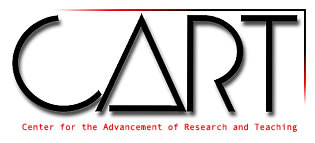Poster: Measuring and Modeling the Effects of Landscape Development on Climate Variability and Evapotranspiration in Southeastern Massachusetts
Location
Moakley Atrium
Start Time
16-5-2007 3:00 PM
End Time
16-5-2007 4:30 PM
Description
Southeastern Massachusetts is experiencing dramatic rates of landscape change, largely due to human activity. This faculty-undergraduate research project integrates microclimate measurements, remote sensing, and geographic information systems (GIS) to explore the impacts of landscape variability on local climate variables, with a focus on air temperature and evaporation from the ground. In particular we expect to find that urban development in SE Mass. creates local climate variability and change that may be more significant to our lifestyle than the “global” climate change reported by the IPCC assessment. We hope that our results will encourage smarter planning practices in the future. Objectives: 1) laboratory and field testing of sensors for the evapotranspiration network (ETnet); 2) installation of ETnet in various natural and human-made landscapes to record weather variables for computer modeling of evaporation and transpiration; and 3) comparison of landscape impacts on patterns of ET and temperature using GIS.
Poster: Measuring and Modeling the Effects of Landscape Development on Climate Variability and Evapotranspiration in Southeastern Massachusetts
Moakley Atrium
Southeastern Massachusetts is experiencing dramatic rates of landscape change, largely due to human activity. This faculty-undergraduate research project integrates microclimate measurements, remote sensing, and geographic information systems (GIS) to explore the impacts of landscape variability on local climate variables, with a focus on air temperature and evaporation from the ground. In particular we expect to find that urban development in SE Mass. creates local climate variability and change that may be more significant to our lifestyle than the “global” climate change reported by the IPCC assessment. We hope that our results will encourage smarter planning practices in the future. Objectives: 1) laboratory and field testing of sensors for the evapotranspiration network (ETnet); 2) installation of ETnet in various natural and human-made landscapes to record weather variables for computer modeling of evaporation and transpiration; and 3) comparison of landscape impacts on patterns of ET and temperature using GIS.
